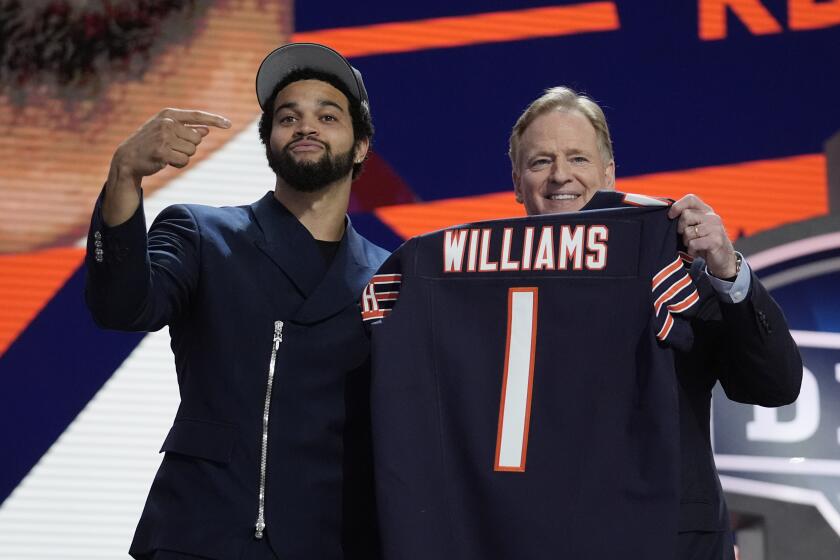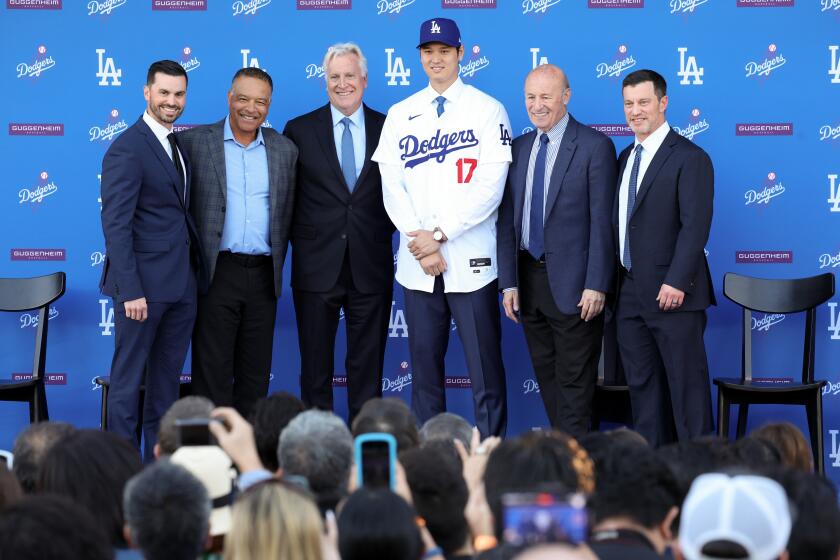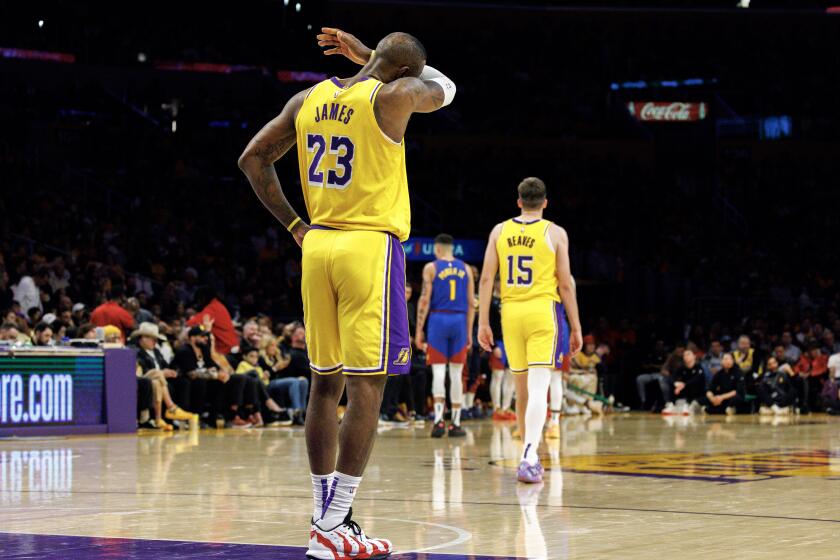Good luck getting a family of four into a professional sport for $100 — not in good seats, but any seats

A lifetime of sports fandom often starts with that first vision of the towering stadium before you, that first peek at the vibrant green grass of a ballpark, that first chance to see star players up close on the court and even closer on a gigantic video screen, that first moment to stand and scream for your team.
“We do remember that first ballgame our parents, our friend, our Scout troop might have taken us to,” said Andy Dolich, who has run marketing operations for teams in all five major North American sports. “It’s one of those indelible memories for tens of millions of people.”
That experience has become all but unaffordable for the typical family in the Los Angeles area.
As teams focus on maximizing revenue from the current generation of fans, they risk losing a future generation of fans, particularly at a time when kids limited to experiencing games on a screen might well prefer Fortnite to ESPN.
The arms race to turn athletic venues into opulent cash machines — with gourmet dining, finely appointed luxury suites, VIP seats within sweating distance of the action, and video boards suited for Hollywood premieres — has all but left the common fan behind. Good luck getting a family of four into a game for $100 — not in good seats, mind you, but in any seats.
Dolich is a former chief operating officer of the San Francisco 49ers and Golden State Warriors and a former president of business operations for the Memphis Grizzlies. He now runs a sports consultant firm, and he is worried for an industry in which kids are increasingly priced out.
Former Dodgers pitcher Rich Hill and his wife were arrested Saturday outside Gillette Stadium before the New England Patriots-Buffalo Bills game.
“You’re not yelling. You’re not screaming. You’re just not going,” Dolich said. “That, I think, is the most pernicious part of it.”
The median income for a family of four in Los Angeles County is $78,673, according to the USC Price Center for Social Innovation. After accounting for the costs of housing, child care, health care, food, transportation and taxes, that family would be left with $3,413 in discretionary income for the year, $284 per month.
Elly Schoen, data and project manager at the Price Center, said it would be “reasonable” to consider $100 as a price point for a family day at a sporting event.
“You’re thinking about going out to one or two games a year,” Schoen said, “and you’re thinking about spending about half your monthly discretionary income on that kind of family outing.”
The Times asked the 11 major professional teams that call Los Angeles and Orange County home whether a family of four could attend a weekend game for $100 — tickets, parking, and something to eat and drink. When prices exceeded that amount, The Times asked teams what the most affordable option for a family might be.
The Angels are the only team that guarantees any family can get to a weekend game for that amount. The team offers a $44 family pack that includes four field-level tickets, four hot dogs, and four soft drinks. Parking at Angel Stadium is $10.
The Sparks offer a $100 family pack that includes tickets, food and autograph vouchers, with parking for an additional $10. The Galaxy offer a family deal for $128, including a $10 concession credit and souvenirs but not food or parking.
The Ducks have a weekend family pack at $120, not including parking. The Kings have a family pack at $220, which includes family activities before Saturday games and a skating session at the team’s training facility.
LAFC offers 200 first-come, first-served tickets at $22 each, with discounted food and drinks in that section.
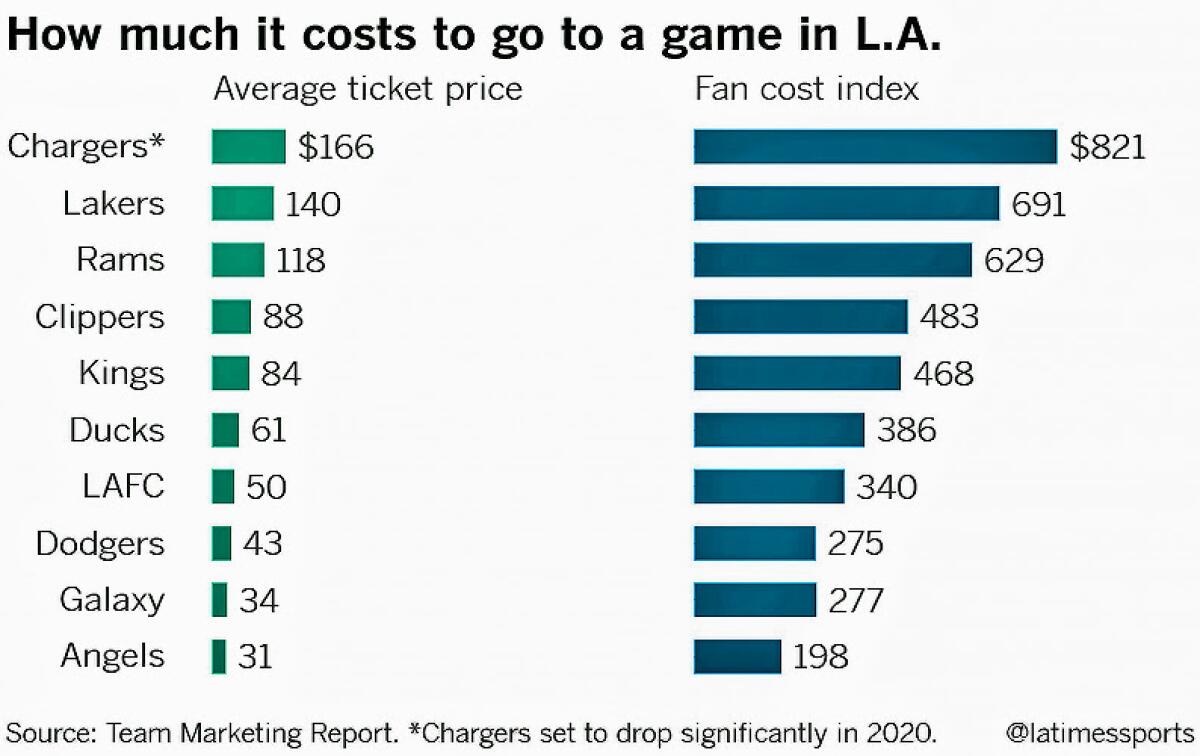
The Clippers sell $10 tickets at Staples Center on game day — first come, first served, with 50 to 200 tickets available for each game. They also provide the 120,000 participants in their Jr. Clippers youth basketball program with a free ticket to one game each season; parents pay for their game tickets.
The Lakers suggested the option of their minor league affiliate, the South Bay Lakers. The team plays at the Lakers’ team headquarters in El Segundo, where parking is free, and a $125 family pack includes $40 in food and beverage credit.
The Chargers and Rams both noted that training camp is free, often with interactive activities designed for families. The lowest single-game price this season is $35 for the Rams and $70 for the Chargers, although the Chargers anticipate a lower price when they move into the larger Sofi Stadium next season.
The Dodgers declined requests to participate in the survey. According to the initial 2020 single-game prices posted on the team website last month, the Dodgers are selling tickets for as low as $10 to the two midweek Freeway Series exhibition games. The Dodgers are selling $21 tickets for only one weekend game next season; the minimum price for all others is $30.
::
There is nothing new in a divide between fans that can afford to see a game in person and fans that can only afford to watch on television. What is new is that the kids whose families cannot afford to see a game in person might have no interest in watching on television.
More millennials have a video gaming subscription than a pay-TV subscription, according to a Deloitte report this year. Of the five major North American pro leagues, all but the NFL largely demand that fans subscribe to cable or satellite television to catch the broadcast of their favorite team.
Said Dolich: “You’re dealing with Susie or Jimmy who says, ‘I’m in League of Legends, I don’t really have much interest in a baseball game and sitting there for three and a half hours,’ or, ‘I get my basketball myself, by playing it on my screen.’ ”
If a team does not lure a fan at a young age, the battle might be lost. According to the SSRS/Luker on Trends Sports Poll, fans that attend their first game by age 5 will go to 58% more games per year, for life, than fans who attend their first game by age 14 or older.
The rising cost of attendance is not limited to Southern California. The Fan Cost Index — defined by Team Marketing Report as four average-price tickets, four hot dogs, four sodas, two beers, two caps and parking — is above $100 for all of the 147 teams in the NBA, NFL, NHL, MLB and MLS.
The average FCI is $234 in MLB, $250 in MLS, $421 in the NBA, $425 in the NHL, and $541 in the NFL.
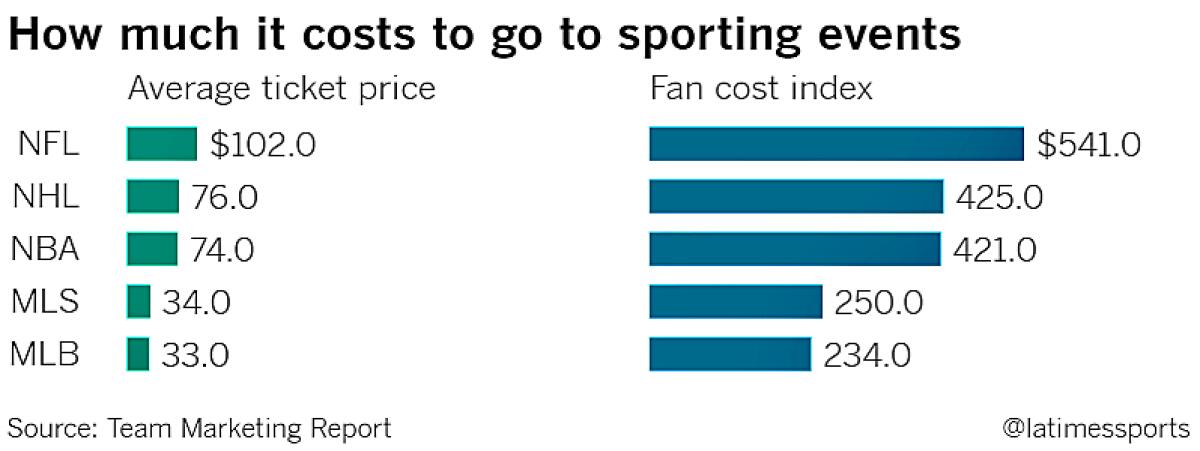
Chris Hartweg, publisher of Team Marketing Report, said he worries what might happen in the industry as the older generations of fans that can afford such affluence die off.
“The next generation has never been to a game, to be hooked on it,” he said.
The secondary ticket market can provide access to cheap tickets. That might not always work for a family that needs to plan in advance and cannot attend a game on a school night.
In California, where team owners rather than taxpayers largely pay to build sports venues and ticket revenue can be used to recoup construction or renovation costs, Dolich said owners have a fair basis for charging what the market will bear.
The owners of the Dodgers, for instance, have spent more than $300 million on upgrades to Dodger Stadium. The pricing is not keeping fans away; the Dodgers sold more tickets last season than any other team in North American sport. Had they played just one more home game, they would have sold four million.
On the other hand, Dolich said, that strategy unintentionally limits one avenue to get kids out to a game.
“If you have made that investment for your company in one of those high-priced, VIP seating products, are you going to ask your colleague to bring the kids to the game? No, you’re going to bring a client that might sign a multi-million-dollar contract to the game,” he said, “because you’re plunking down thousands just for the game, and possibly hundreds of thousands for seats in a great place, or for the suite, which could be a million-plus.”
Hartweg worked for five years in a sports marketing business that involved NASCAR.
“The average Joe that used to make a weekend out of it, a road trip with the whole family, got priced out,” he said. “And now you can’t get them to come back.”
::
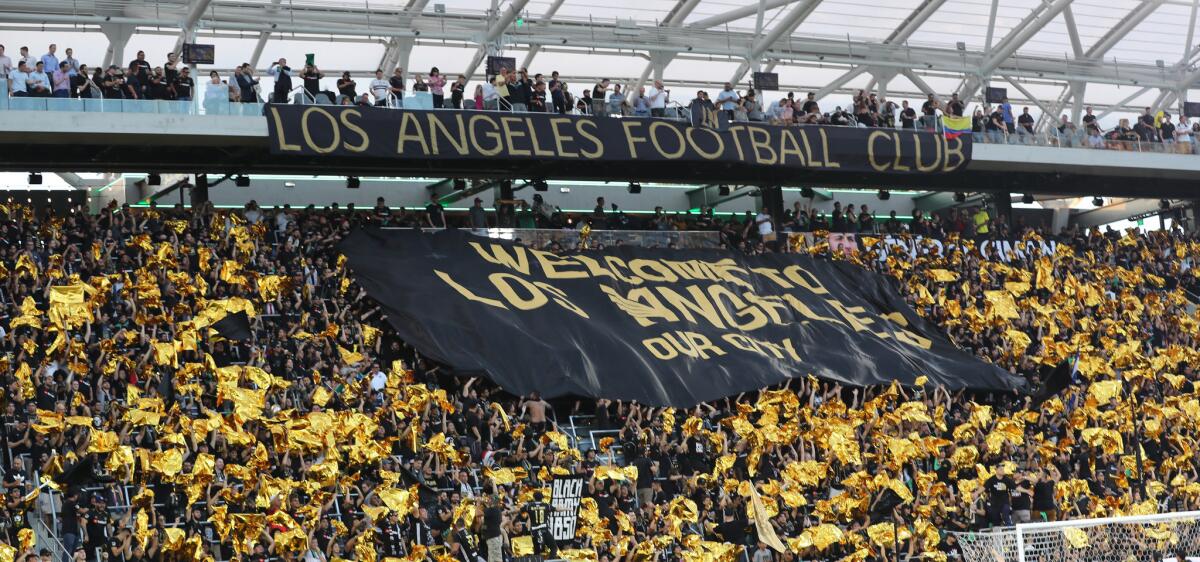
The time could be right for teams to redesign their ticket pricing, with an eye on developing fans rather than squeezing more dollars out of current fans. Although every team and every market is different, ticket revenue is no longer the primary source of income for the sports industry.
In 2017, for the first time, media revenues exceeded ticket revenues in the North American sports market, according to a PwC study. The rise of sports betting means that sponsorship revenues also could exceed ticket revenues by the end of the decade, the study said.
The Warriors, who have played in five consecutive NBA Finals and won three of them, moved into the $1.6-billion Chase Center this fall. They are sold out for the season, chief revenue officer Brandon Schneider said, but they make 125 seats available for every game at $25 each.
“It’s way below what the tickets are worth, but we’re doing that on purpose,” Schneider said. “We wanted to make sure tickets were accessible to as many people as possible.”
Schneider said that affordability is not the only factor in developing the next generation of fans.
“You could name some teams across sports that have really, really affordable tickets, and they also have a lot of people dressed up as empty seats,” he said. “So it’s not all about price. It comes down to overall entertainment value.
“We need to appeal to kids, to that next generation, whether that’s through our basketball camps, our kids programming, there’s a lot of ways. Having kids come to games is definitely an important one.”
The sport most affected by the affordability dynamic is baseball. Football games are played once a week. Baseball games are played almost every day, in ballparks that seat two to three times as many fans as the arenas in which basketball and hockey are played.
The supply of tickets is vast, but the demand is falling. In 2007, MLB teams combined to sell a record 79.5 million tickets, a number that dropped to 68.5 million this year — the fourth consecutive year total attendance has fallen.
Even as baseball insiders debate how much fans might be turned off by games that drag on too long, and by teams that play to lose now in the hope of winning in the future, a Baseball Prospectus analysis released last month determined that rising ticket costs accounted for about 40% of the decline in MLB attendance over the past five years.
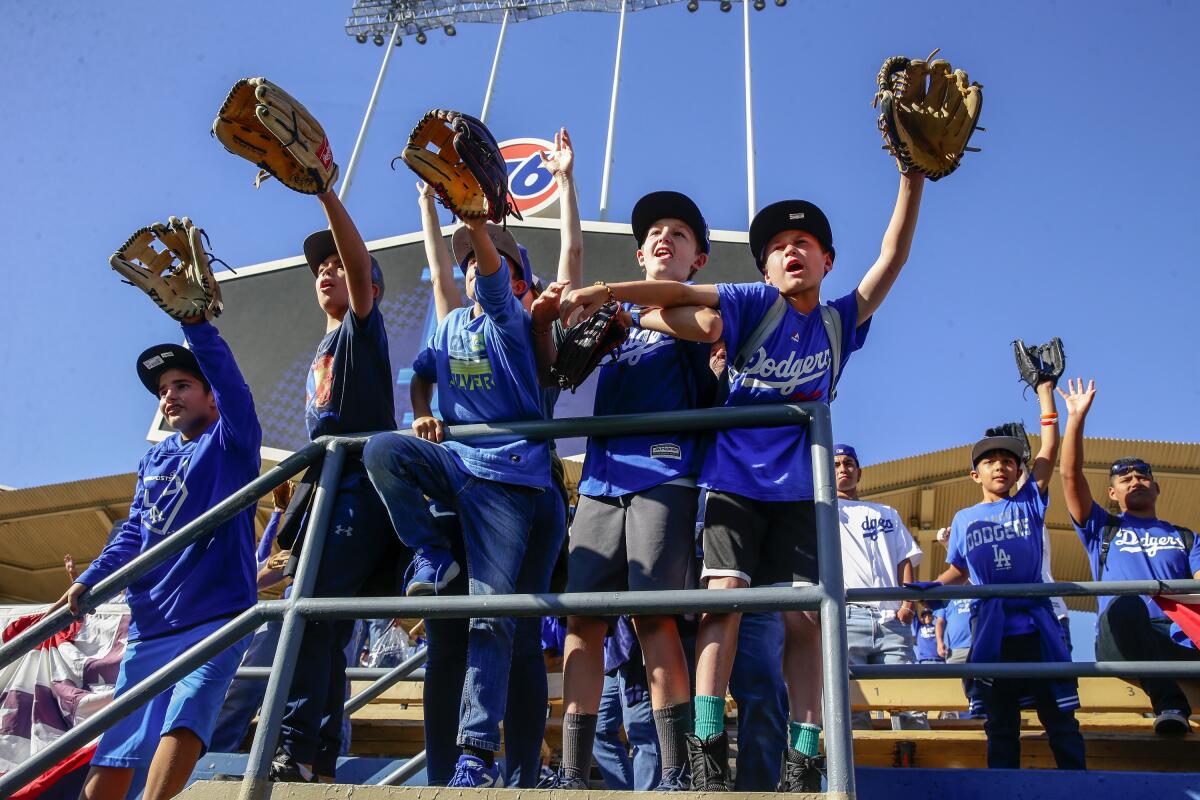
Rising prices can mask that decline. As teams use analytics to help them win and make more money, sophisticated pricing strategies can allow a team to increase its revenue from ticket sales even as it sells fewer tickets. The average price of an MLB ticket rose from $28.94 five years ago to $32.99 this year, according to Team Marketing Report.
The Boston Red Sox entered last season as defending World Series champions and sold 96% percent of the seats at Fenway Park. They still offered a student discount program that makes several hundred $9 tickets available for each game and a kids club that provides about 25,000 free tickets each season, according to Red Sox chief marketing officer Adam Grossman.
“We look at it not as giving away free tickets, but as an investment into the long-term health of the Red Sox,” Grossman said. “We believe that, even if you’re not a huge baseball fan, the experience of coming to Fenway Park is really valuable, and we can hopefully hook you for life.
“You’ve got to seed the next generation.”
The Baltimore Orioles have fielded the two worst teams in their history the last two seasons, selling fewer than half the available seats at Camden Yards for teams that finished a combined 110 games out of first place. However, in those two seasons, they admitted more than 10,000 kids free of charge, the first major North American team to do so, they boast.
The Dodgers continue to test the patience of their curiously loyal customers with a winter strategy that doesn’t mesh with winning a World Series title.
“We know that kids are not coming to baseball games as much as they once did. This is one way to ensure that affordability is not the primary reason for that,” Orioles senior vice president Greg Bader said. “We want the Orioles and Major League Baseball to create that next generation of fans.”
Bader also said he has not heard complaints from rival teams about how the Orioles might be devaluing tickets.
“To the contrary,” he said, “everyone has said this is very forward-thinking, that it allows more kids to be exposed to the sport, and to grow up watching baseball the way adults did when they were children.”
At some point, the Orioles will return to glory, fans again will flock to the ballpark, and tickets will be in high demand. Would the Orioles keep what they call their “Kids Cheer Free” program?
“We certainly would expect to,” Bader said.

Sign up for Full-Court Text with NBA reporter Dan Woike
Receive SMS texts about the Lakers, Clippers and the rest of the NBA and text back with your questions.
More to Read
Get our high school sports newsletter
Prep Rally is devoted to the SoCal high school sports experience, bringing you scores, stories and a behind-the-scenes look at what makes prep sports so popular.
You may occasionally receive promotional content from the Los Angeles Times.






